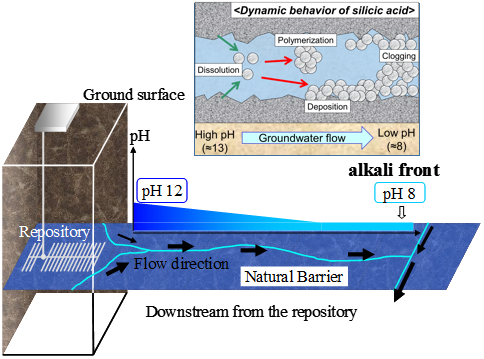Front Line Research
Evolving the study and development of materials to enhance the capabilities of "barriers" to confine nuclides based on an understanding of geosphere environments!
Expected mass generation of the low-level radioactive wastes
Radioactive waste is an unavoidable problem if we are to receive the ample benefits of nuclear energy. The radioactive waste produced by nuclear plants and nuclear fuel cycle facilities are roughly grouped into "high-level radioactive waste" and "low-level radioactive waste." High-level waste is often heard of in the media, like newspapers and television, but the amount of the low-level waste is much greater. All six nuclear power plants of Fukushima Daiichi Nuclear Power Plant will be decommissioned and it is expected that a huge quantity of the low-level radioactive wastes including metallic waste and concrete waste that accompanies the dismantling of the facility will be produced within a relatively short period of time.
Low-level radioactive waste is classified based on its radioactivities and other properties, to apply safe and appropriate disposal and handling methods.
- Low-level radioactive waste with relatively high level activity (such as control rods and the core internals): Intermediate depth disposal (transported to and buried in artificial structures constructed at 50-100 meters below ground)
- Low-level radioactive waste (liquid waste, filters, and expendables): Near-surface pit disposal (transported to a concrete storage facility and the entire facility is then buried at about 10 meters below ground)
- Extremely low-level radioactive waste (concrete and metal): Near-surface trench disposal (disposed in landfills a few meters below ground)
Natural barriers such as soil and geological formations and engineering barriers such as casing constructions and concrete structures are methods meant to protect the human environment from radioactive waste indefinitely. Therefore, an evaluation of integrity and stability of these barriers are essential.



